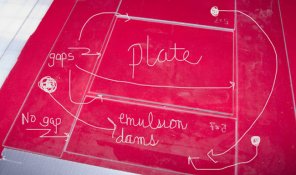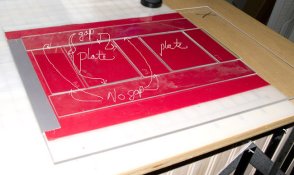I'd like to add my support for Bill's creds as a glass authority. I don't know anyone who has more experience with more processes on glass than Bill. When Bill talks glass, I know I listen. I will add, from my own experience with silver gelatin dry plate emulsions, glyoxal is only suitable if what you want is a beautiful emulsion transfer. Michael Carter is spot-on with that observation.
And, a short additional note about chrome alum. It certainly doesn't do any harm, but it really isn't necessary for most people making dry plates today. Back when, it was used by the makers of commercial plates mostly because they didn't know the temperatures people would be working with. Today, with A/C, ice cubes, and digital thermometers, we don't have to worry so much about summer darkroom conditions. The same goes for added preservatives.
There is a downside to adding alum, at least for beginning or casual plate makers. It takes at least a couple of days to fully work. If you know for an absolute fact that you have ripened your emulsion to precisely the right point, this is all fine and dandy. But, if you have passed even a little bit into over-ripening, your plates can pick up a bit of fog before the alum has completely cured. If you under-ripened, your plates may continue to pick up speed. If there is significant time between the time you expose and process the first plate in a batch and the last plate, they may be fairly different plates, which makes exposure testing harder than it need be.
So...my advice is to keep things as simple as possible. Make small batches of emulsion and make them often. Don't think in terms making 'enough plates to last awhile', at least as you are starting out. If ever an old saying was true, it's here. Practice makes perfect.
It's really exciting to see all the new work being done with emulsions, including PE's continuing research. It will be very interesting to read this forum five years from now!
d









 .
.



